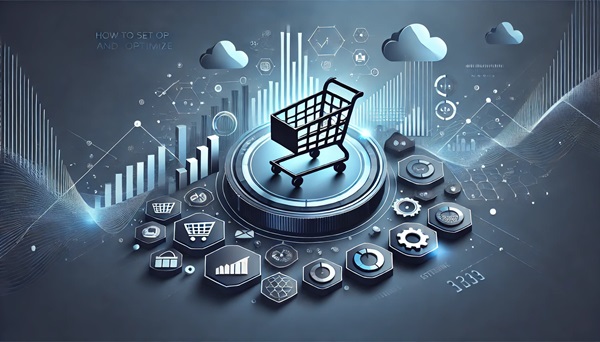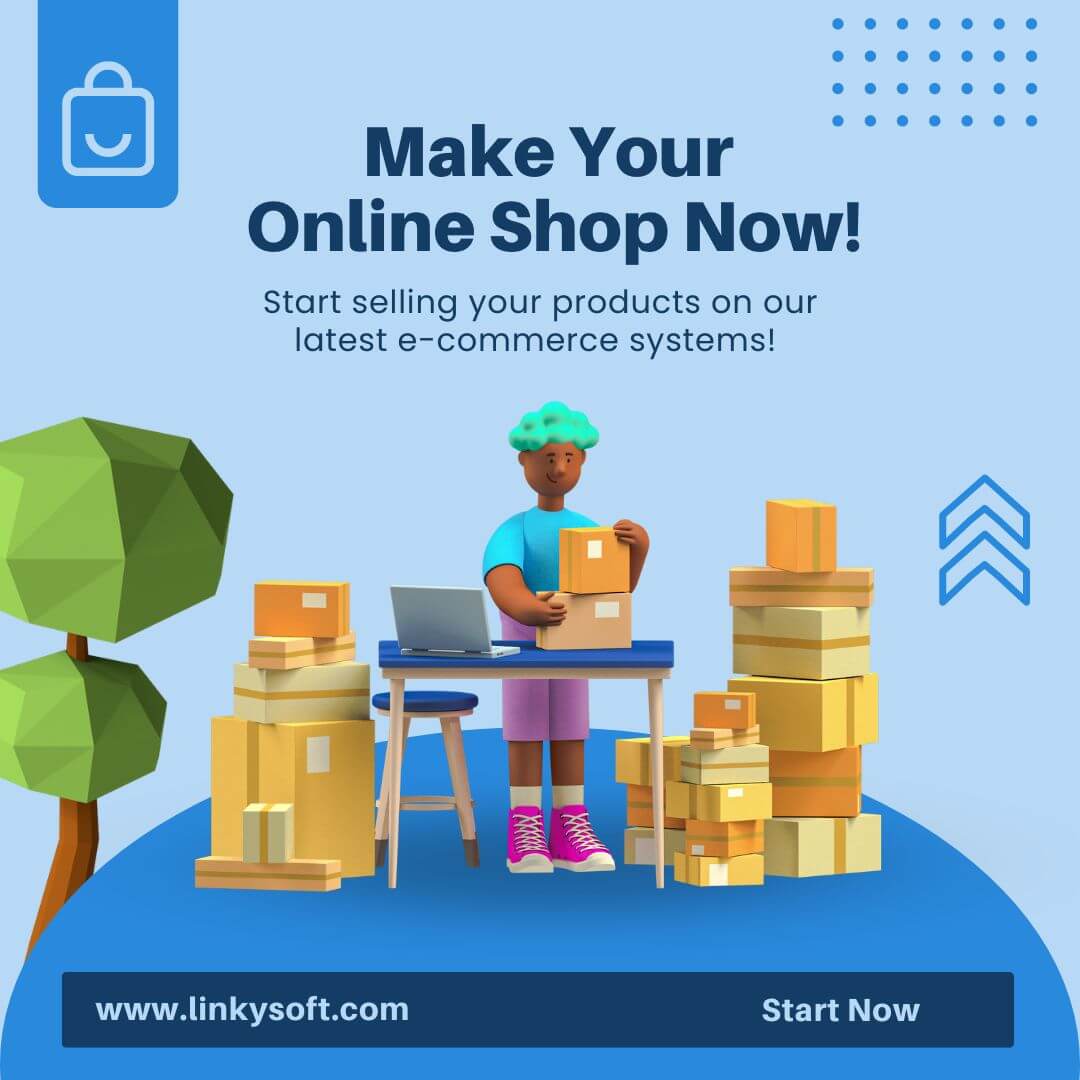In today’s highly competitive digital landscape, having a well-optimized e-commerce system is crucial for any business aiming to increase sales and grow. With the surge in online shopping, businesses must go beyond just setting up a store; they must focus on optimization, user experience, and strategic enhancements. The goal is not only to attract visitors but also to convert them into loyal customers. In this article, we will dive deep into how you can set up your e-commerce system effectively and continuously optimize it to boost your sales. We will cover each aspect in great detail, ensuring you have a robust understanding of the tools, strategies, and techniques necessary for long-term success.

1. Choosing the Right E-Commerce Platform
One of the first and most critical decisions you will make when building your e-commerce business is choosing the right platform. This platform serves as the foundation upon which your entire online store operates. Each e-commerce platform offers different features, scalability options, and customization opportunities. Some popular platforms include Shopify, Magento, WooCommerce, and more specialized systems like Cartz - E-commerce Management System offered by Linkysoft.
Understanding the Importance of Scalability
Scalability is crucial for growing businesses. As your customer base expands, your platform must be able to handle increased traffic, more product listings, and a higher volume of transactions. Platforms that offer scalability allow you to upgrade features and infrastructure without causing disruptions to your operations. Linkysoft’s Togar Multi-Vendor E-commerce System is an excellent example of a scalable solution that supports multiple vendors and allows businesses to expand without the need for significant overhauls.
Customization and Flexibility
Another important factor to consider is customization. While some platforms may provide out-of-the-box templates and features, others offer advanced customization options that allow you to tailor the store to your brand’s unique needs. For instance, Linkysoft’s Togar Pro provides extensive customization features, making it an ideal choice for businesses seeking more control over their store’s appearance and functionality.
Ease of Integration with External Tools
Your e-commerce platform should integrate seamlessly with other essential tools like payment gateways, shipping solutions, and marketing platforms. Integration is vital for ensuring smooth workflows and enhancing customer experience. The Togar Pro platform, for instance, supports APIs that allow easy integration with third-party tools, enabling a more unified approach to business management.
2. Setting Up Essential E-Commerce Features
After selecting your e-commerce platform, it’s time to set up the essential features that form the backbone of any online store. These features enhance customer experience, ensure smooth transactions, and support store management.
Creating Effective Product Pages
The product page is where most customers make the final decision on whether to purchase or leave the site. As such, optimizing product pages is critical. This includes using high-quality product images from multiple angles, creating detailed descriptions that highlight the product's benefits, and providing clear pricing. Adding customer reviews and ratings can also help build trust and credibility.
Product Videos and Interactive Media
With advancements in technology, it is becoming increasingly common to use product videos and 360-degree images. These interactive media formats allow customers to get a better understanding of the product, increasing their likelihood of making a purchase. E-commerce systems like Cartz allow easy integration of videos and dynamic product galleries.
Optimizing the Checkout Process
A seamless and user-friendly checkout process is essential for reducing cart abandonment rates. Many customers abandon their carts due to complicated checkout procedures, lack of payment options, or unexpected shipping fees. Offering a guest checkout option, streamlining form fields, and providing multiple payment methods are effective ways to enhance the checkout experience.
Payment Gateways and Security
Security is a top concern for online shoppers. Ensure that your e-commerce platform integrates with secure payment gateways and complies with the Payment Card Industry Data Security Standard (PCI DSS). Offering secure options like PayPal, Stripe, and Apple Pay, along with SSL encryption, can boost customer confidence. The Togar system provides a secure environment, making it easier for businesses to offer a variety of payment options without compromising security.
3. Optimizing for Mobile Commerce (M-Commerce)
With mobile devices now accounting for a significant portion of e-commerce traffic, optimizing your store for mobile commerce is no longer optional. In fact, a report by Statista estimates that mobile commerce will make up 72.9% of all e-commerce sales globally by 2021. Thus, ensuring that your site is mobile-friendly is essential for capturing and converting mobile users.
Responsive Design: A Must for Mobile Optimization
Responsive design ensures that your e-commerce site adapts to any screen size, whether it’s being accessed from a desktop, tablet, or smartphone. A mobile-optimized design should offer fast loading times, intuitive navigation, and easy-to-click buttons. Cartz offers responsive templates, ensuring that your site looks and functions well on all devices.
Implementing Mobile Payment Solutions
To further improve the mobile shopping experience, integrating mobile payment solutions like Apple Pay, Google Pay, and Samsung Pay is essential. These payment methods are designed for ease of use on mobile devices, reducing friction during the checkout process and lowering the chances of cart abandonment.
4. Implementing SEO Strategies for E-Commerce Success
Search Engine Optimization (SEO) is one of the most effective long-term strategies for driving organic traffic to your e-commerce store. Unlike paid advertising, SEO focuses on improving your site’s visibility in search engine results pages (SERPs) organically.
Optimizing On-Page SEO Elements
On-page SEO refers to optimizing individual pages on your site to rank higher in search engine results. Key elements include:
- Title Tags: Ensure that your title tags are unique and include your primary keyword.
- Meta Descriptions: These brief descriptions should entice users to click on your result in the search engine.
- URL Structure: Use clean, keyword-rich URLs that are easy to understand by both users and search engines.
- Alt Text for Images: Including descriptive alt text for product images improves accessibility and SEO.
Improving Site Speed for Better Rankings
Site speed is a ranking factor in Google’s algorithm, and it significantly affects user experience. Compressing images, leveraging browser caching, and using a Content Delivery Network (CDN) can dramatically improve your site’s loading time. Platforms like Togar Pro come with built-in performance optimization features that help boost your site speed.
5. Conversion Rate Optimization (CRO): Maximizing Sales Opportunities
Driving traffic to your website is important, but converting that traffic into paying customers is what really matters. Conversion Rate Optimization (CRO) is the process of refining your site to improve the percentage of visitors who make a purchase.
Utilizing A/B Testing to Optimize Conversions
A/B testing, or split testing, is the process of comparing two versions of a webpage or element to see which one performs better. You can test various aspects, such as headlines, product descriptions, images, and call-to-action buttons. Over time, these small changes can lead to significant improvements in your conversion rates. CRO tools that support A/B testing can be integrated into e-commerce platforms like Linkysoft’s e-commerce systems.
Improving Product Recommendations
One way to increase your average order value (AOV) is by improving product recommendations. Displaying relevant products based on browsing behavior or purchase history can increase the chances of cross-selling and upselling. Machine learning algorithms in systems like Cartz can automate this process, providing personalized recommendations to each customer.
6. Leveraging Data Analytics and Business Intelligence
To optimize your e-commerce system effectively, you need data. The more insights you have into your customers' behavior, the better equipped you’ll be to make informed decisions that can boost sales.
Tracking Key Performance Indicators (KPIs)
Tracking KPIs such as conversion rate, bounce rate, customer acquisition cost, and average order value is essential for understanding the health of your e-commerce business. Many platforms, including Togar Pro, offer built-in analytics dashboards that allow you to monitor these metrics in real-time.
Using Predictive Analytics for Future Growth
Predictive analytics is a powerful tool that helps businesses anticipate future trends based on historical data. By leveraging artificial intelligence (AI) and machine learning, predictive analytics can help you forecast demand, optimize inventory levels, and identify potential customer segments. Platforms like Linkysoft's e-commerce systems offer advanced analytics features that can support this level of data analysis.
7. Email Marketing: Building Relationships That Drive Sales
Email marketing remains one of the most effective channels for e-commerce businesses. It allows you to nurture relationships with your customers, provide personalized offers, and encourage repeat purchases.
Segmenting Your Email Lists
Effective email marketing starts with segmentation. By dividing your email list into segments based on customer behavior, preferences, and purchase history, you can send more targeted and relevant messages. This approach improves engagement rates and increases the likelihood of conversions.
Automating Email Campaigns
Automated email campaigns, such as welcome emails, abandoned cart reminders, and post-purchase follow-ups, can significantly improve your customer retention and recovery rates. E-commerce systems like Cartz offer automation features that allow businesses to set up these campaigns with minimal effort.
8. Social Media and Paid Advertising: Extending Your Reach
Social media platforms like Facebook, Instagram, and Pinterest are powerful marketing tools for e-commerce businesses. By leveraging these platforms, you can reach new audiences, engage with your existing customers, and drive traffic back to your store.
Integrating Social Media with Your E-Commerce Platform
Social media integration allows you to manage product listings, track analytics, and even sell directly through platforms like Facebook and Instagram. E-commerce platforms like Togar Pro support seamless integration with social media, making it easier to manage your online presence from a single dashboard.
Investing in Paid Advertising
Paid advertising on social media can yield excellent returns if done correctly. With options like Facebook Ads, Instagram Ads, and Google Shopping, you can create highly targeted campaigns based on user behavior, demographics, and interests. By integrating these ads with your e-commerce system, you can track conversions and optimize your campaigns for better performance.
9. Enhancing Customer Support and User Experience
Providing exceptional customer support and an intuitive user experience is crucial for maintaining customer loyalty and driving repeat sales.
Implementing Live Chat and Chatbots
Offering live chat and chatbot support can dramatically improve customer satisfaction. Live chat allows customers to get immediate assistance, while chatbots can handle routine queries, providing 24/7 support. E-commerce platforms like Togar Pro offer integration with chat services, ensuring that customers always have access to support when they need it.
Improving the Overall User Experience (UX)
The user experience is at the core of any successful e-commerce business. A clean, easy-to-navigate site design with clear calls-to-action, fast load times, and mobile responsiveness will encourage users to explore your store and complete purchases. Investing in user experience not only improves sales but also helps build a positive brand reputation.
Conclusion: Driving Sales Through Continuous Optimization
Setting up and optimizing your e-commerce system is an ongoing process that requires continuous evaluation and refinement. By following the strategies outlined in this article—ranging from platform selection and mobile optimization to SEO, CRO, and customer experience—you can set your store up for long-term success. Don't forget to explore Linkysoft’s e-commerce solutions to find the best system tailored to your business needs, and ensure that you remain at the forefront of the ever-evolving e-commerce landscape.








